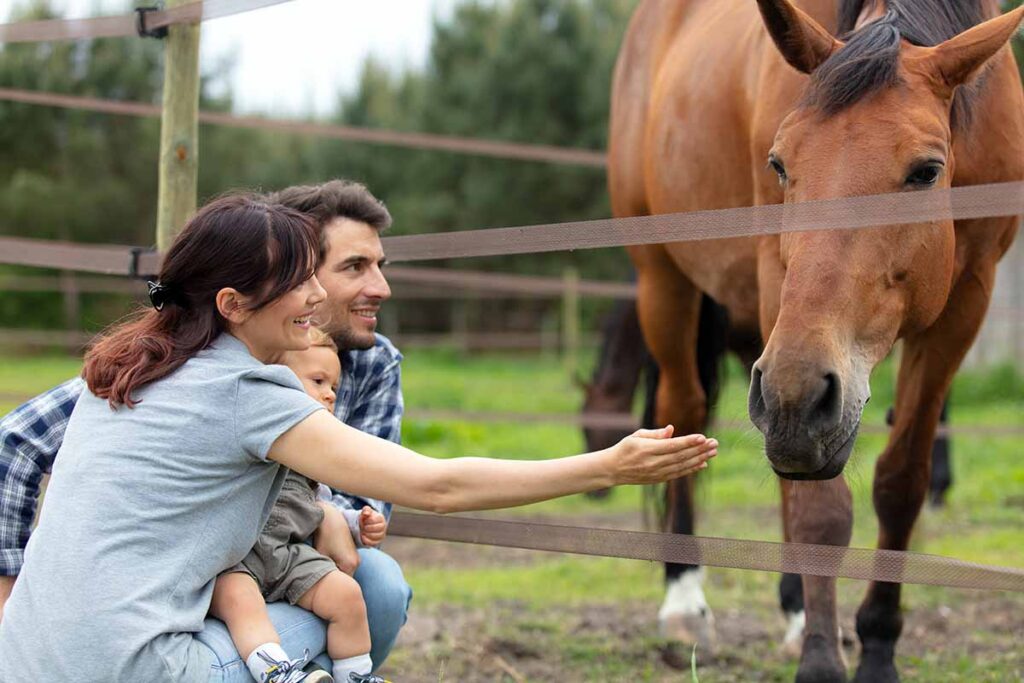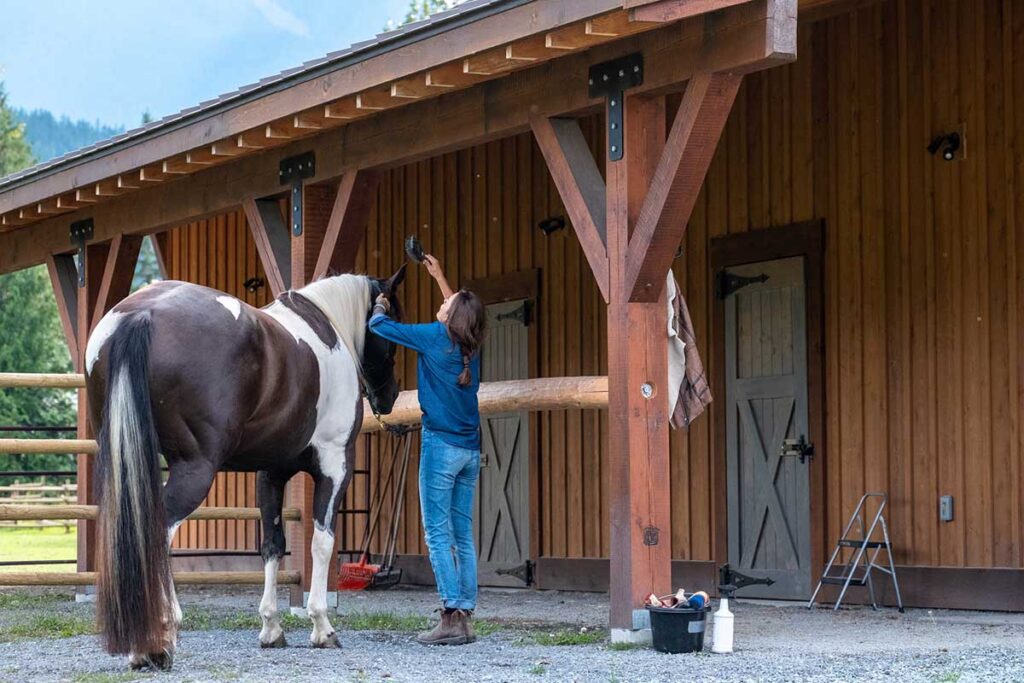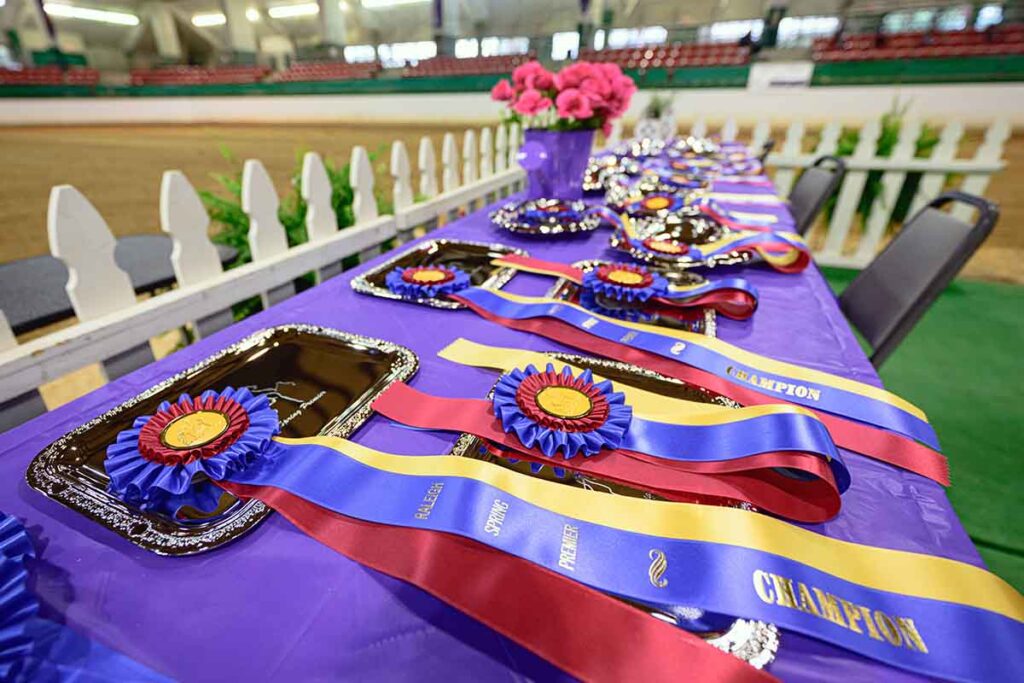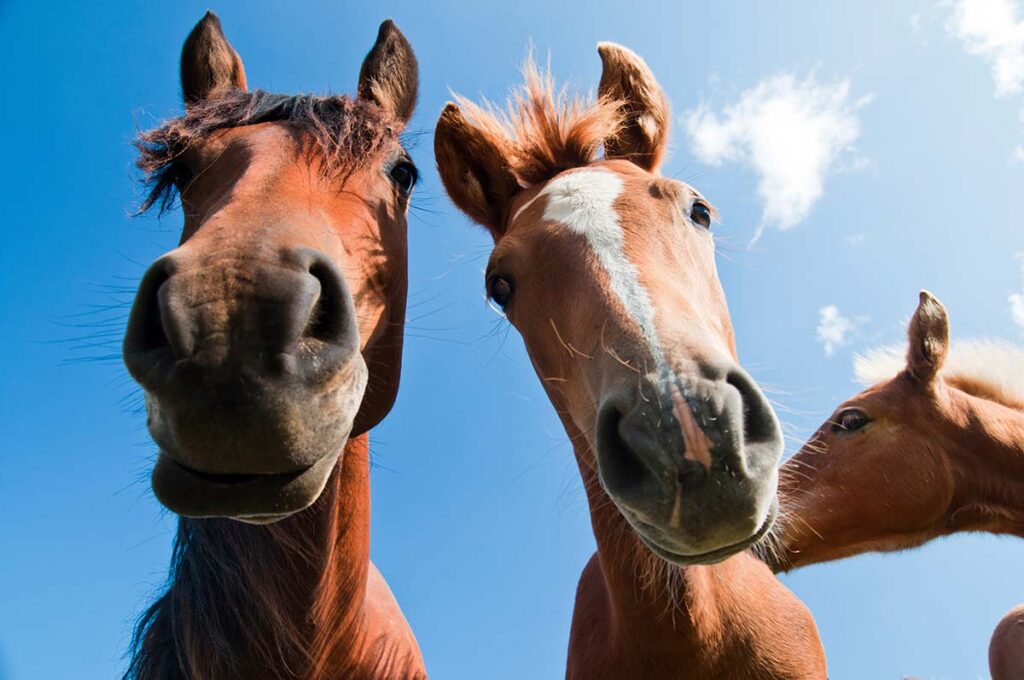A horse’s bridle, with all its straps, buckles, and bands, might at first seem like some complex apparatus. Each part, however, plays an important role in allowing you to control and communicate with your horse while riding. The key is putting that bridle on properly and attaching all the pieces correctly.
If you’re learning how to put a bridle on a horse, use this step-by-step article as your guide.
Horse Bridle Terms to Know
Familiarize yourself with the pieces of a bridle and parts of a horse’s head, so our instructions don’t sound completely foreign:
- Poll – The point immediately behind and between a horse’s ears.
- Crownpiece or headpiece – The main strap that goes over and rests behind a horse’s ears.
- Cheekpiece – The two straps that run down from the crownpiece on either side of the horse’s face and attach to the bit.
- Throatlatch – A strap that runs from either side of the crownpiece and hangs in the groove below the horse’s cheek and throat.
- Browband – A strap that runs across the horse’s forehead, just below his ears.
- Noseband – encircles the horse’s nose.
- Bars – The areas behind the incisors on both sides of the horse’s jaw where there are no teeth.
- Bridle path – A section of mane behind the horse’s ears that’s clipped so the crownpiece can lie flat in this area.
- Forelock – The part of the mane that grows down between a horse’s ears, covering his forehead.
- Curb strap – A thin strap (can also be a chain) that runs from one side of the bit to the other.
- Keeper – A thin loop that secures loose straps in place.
Bridling a Horse, Step by Step

Follow these steps for how to put a bridle on a horse correctly:
- First, brush any dirt or debris off his head.
- Remove the halter from his head while still tied or cross-tied, and slide it back to hang loose from his neck, right behind the poll. This gives you some control while he’s not restrained.
- Standing on the left side of your horse facing forward, place the reins over his head and rest them on his neck. If your bridle has split reins—as some Western bridles do—place them over the neck.
- Holding the headpiece with your right hand and cupping the bit with your left, slide the bridle over your horse’s nose and up his head until the bit meets his lips. Some people prefer to place their right arm under the horse’s jaw and hold the cheekpieces of the bridle together in front of his face, while others drape their right arm over the top of the horse’s head, between his ears, to keep his head low.
- Ask him to open his mouth for the bit by pressing and wiggling your left thumb gently against the bar of his mouth. Keeping applying pressure until he opens his mouth, then remove it immediately and slide the bit between his jaws without banging against his teeth.
- Pull the crownpiece up over your horse’s ears, gently guiding them beneath it, with the right hand, and make sure it settles on his bridle path. If your bridle has a browband, you can pull his fetlock out from under it or leave it secured beneath.
- Make sure all bridle pieces are lying flat and aren’t twisted.
- If your bridle has a throatlatch, fasten it loosely so you can fit about four fingers between it and your horse’s cheek.
- If your bridle has a noseband, pass both ends beneath the cheekpieces, make sure the band lies straight across your horse’s nose, and fasten them together. You should be able to fit two fingers between the noseband and your horse’s jaw.
- If your bridle has a curb strap, fasten it so you can fit two fingers between it and your horse’s jaw.
- Pull all buckle straps through their keepers so they don’t flap around while you’re riding.
- Unbuckle the halter and cross-ties, pull the reins over your horse’s head, and lead him to your mounting block.
Reverse this process to take the bridle off.
Take-Home Message
When it comes to bridling a horse, practice makes perfect. And as you continue to improve your skills, check your bit and bridle’s fit regularly, inspect your horse’s face for associated rubs and hairless patches, and clean and condition the leather to keep it from wearing out.
Watch:
Are you enjoying this content? Sign up for My New Horse’s FREE newsletter to get the latest horse owner info and fun facts delivered straight to your inbox!








